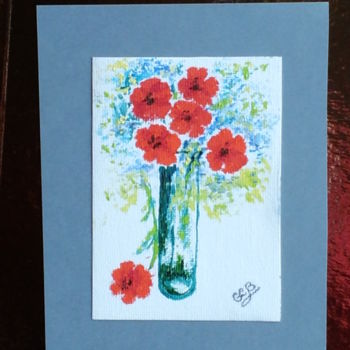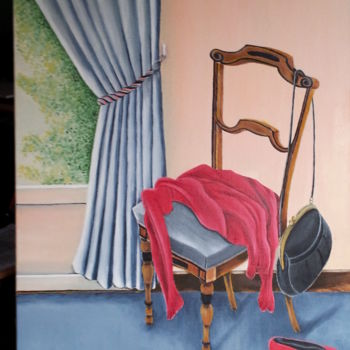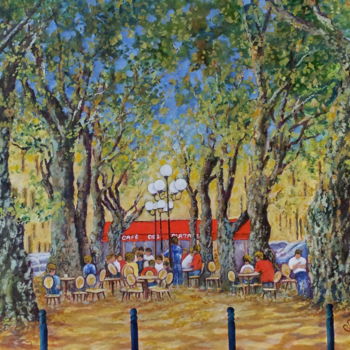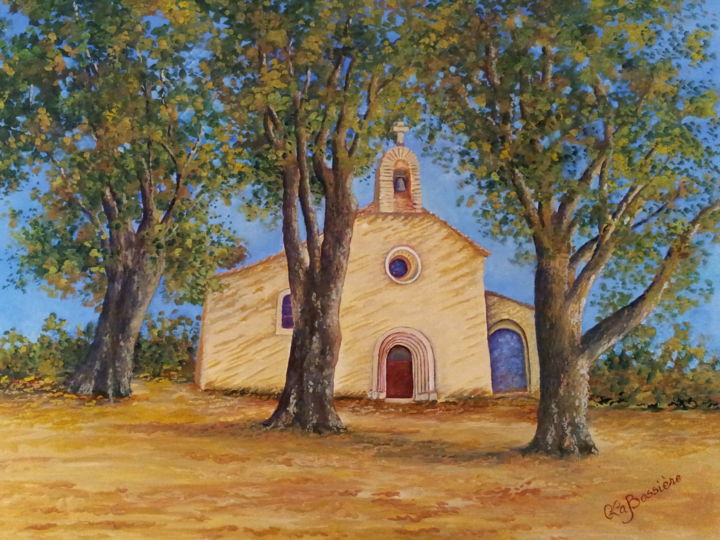
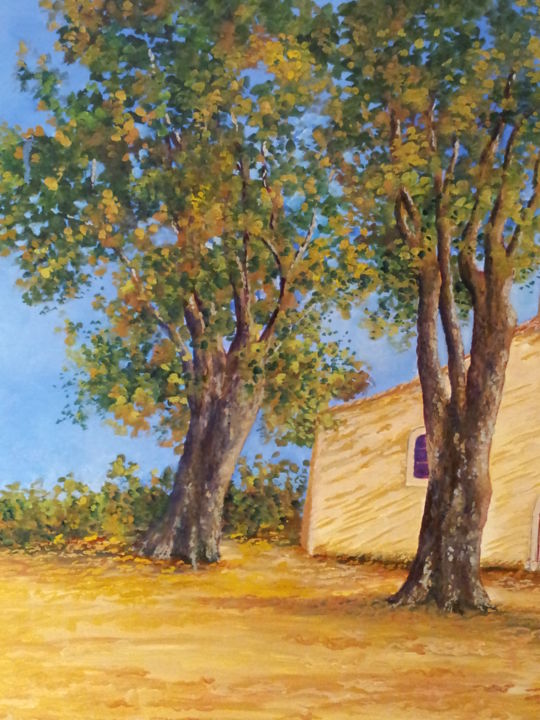
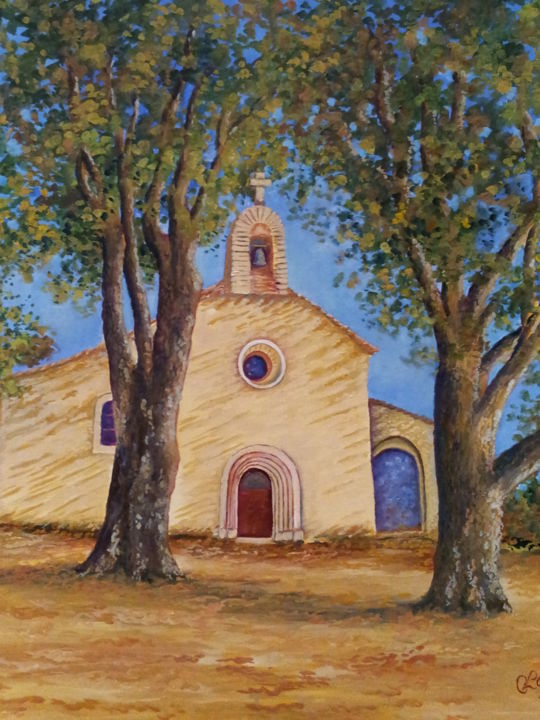
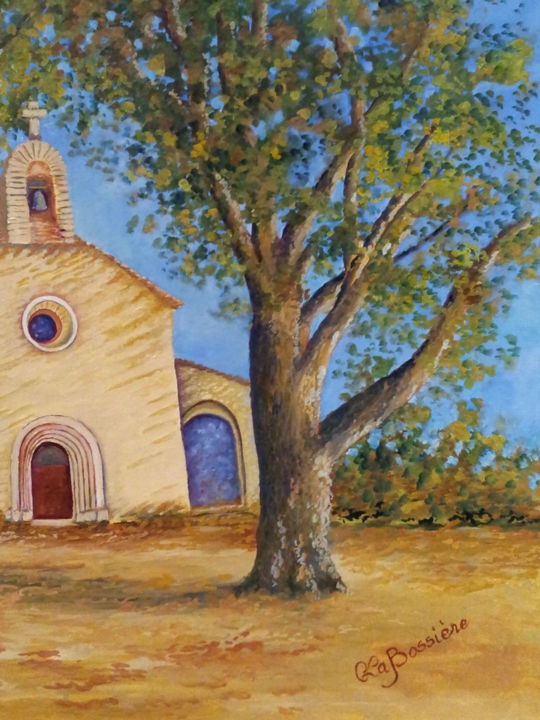
Let us know if you would like to see more photos of this artwork!
- Back of the work / Side of the work
- Details / Signature / Artwork's surface or texture
- Artwork in situation, Other...
chapelle-de-l-abbaye-notre-dame-de-lure-saint-etienne-les-orgues-04230-alpes-de-haute-provence-1.jpg Painting by Cécile Labossière
Seller Cécile Labossière
-
Original Artwork
Painting,
Oil
- Dimensions Height 19.7in, Width 25.6in
- Categories Paintings under $1,000 Figurative
Legend has it that the hermit Saint-Donat, living near Peyruis, came to retire to this particularly isolated place and founded the Abbey of Notre-Dame de Lure there in the 6th century. It would have been destroyed in the 11th century, then given to the Abbey of Notre-Dame de Boscodon, which rebuilt it in 1166.
It was founded ex-nihilo from 1165 by spin-off from the abbey of Boscodon, itself a subsidiary of the abbey of Notre-Dame-de-Chalais (the mother abbey, near Voreppe in Isère). Its site was also given on this date by the local lords to Guigues, abbot of Boscodon, during an act signed at the foot of the village of Redortiers, then built, from 1166, under the responsibility of Guigues de Revel, to whom we also owes the abbeys of Boscodon and Prads. This act of donation was confirmed several times, in particular in 1207, in a charter which details all the priories of the abbey placed under the patronage of Sainte-Marie. There was mention, among other things, of a cellar, located near Saint-Étienne-les-Orgues, given by Guillaume IV de Forcalquier, in November 1191. To this were added the priories given to the abbey in the country d'Aigues, the region of Manosque and the Jabron valley.
At the beginning of the 14th century, the abbey and the canons of the cathedral of Aix-en-Provence were in conflict over the priory of La Tour-d'Aigues, followed by a trial which lasted from 1304 to 1306. As in 1303, the abbey of Chalais had integrated the order of the Cistercians, that of Lure asked Pope Benedict XI to attach it to the Dominicans of Aix. The case failed in Rome.
It was the papacy of Avignon and Jean XXII who settled the fate of Lure, in 1317. The abbey was attached to the chapter of the cathedral Notre-Dame des Doms d'Avignon which followed the rule of the Augustins. The abbot and twelve monks became canons of the church of Avignon, while continuing to reside there, while eight monks joined the city of the popes. In return, the chapter of Avignon now had the right to oversee the designation of the abbots of Lure.
From then on, the rule relaxed and there were fewer and fewer monks who stayed in the abbey during the winter. They preferred to go down to their cellar which was henceforth renamed the Abbadié (the abbey). In 1481, under the pontificate of Sixtus IV, Notre-Dame de Lure was secularized just like Saint-Paul de Mausole and Saint-Michel de Frigolet.
Now placed under the authority of a sponsoring abbot who did not reside, the abbey collapsed. It was burned in 1562 during the wars of religion, the same fate was reserved for the Abbadié in 1578. At the end of the 16th century, Lure was in ruins and only served as refuges for shepherds and woodcutters. But in 1636, the city council of Saint-Étienne and the local clergy decided to restore the place. Work was undertaken both on the abbey, on the hermitage, the fountain and the cistern. They ended in 1659.
Since then, it has mainly been made up of the abbey church, the best-preserved vestige of the initial work. The cloister and the convent buildings have disappeared. Of the outbuildings of the abbey, only two vaulted rooms remain. One of them constitutes the basement of the current hermitage.
To restore its luster to this place of worship, an annual pilgrimage was therefore organized. There were miracles and the Bishop of Sisteron passed this news on to the Pope. They were authenticated in 1656, and Alexander VII authorized the creation of the brotherhood of Notre-Dame de Lure.
In 1790, the sponsoring abbot saw himself stripped of his resources by the sale of agricultural land in Lure. The municipal council of Saint-Étienne, meanwhile, acquired, on April 4, 1791, the abbey and its outbuildings as well as the source. It was after the Concordat, in 1801, that the pilgrimage resumed. Gradually the surroundings were developed by the planting of 22 lime trees in 1824, the restoration of the hermitage in 1828, and that of the facade in 1879.
A new restoration campaign began in 1975 under the aegis of the Association des Amis de Notre-Dame de Lure, which for more than thirty years organized a site for young volunteers under the direction of the architect Chief of Historic Monuments.
Born in Bordeaux on January 6..., magical day of the Three Wise Men from the East and bearers of the 3 gifts, gold, myrrh and incense, guided by the light of a star...
...of a mother from Bordeaux, a father from Martinique,
...one day in 1994 Cécile LaBossière started painting, quite naturally and spontaneously guided by her innate and irresistible attraction to painting.
... this is how, at the end of her professional career as a management assistant at the Bergonié Institute, the Bordeaux and South-West Cancer Center, she will never stop painting.
Her works are born from...writing, poetry, also from her roots with which she feels inseparable and towards which she has always been going to encounter through genealogy, from this love that she has for Nature who inhabits it, that it inhabits to which it belongs and of which it feels an element, certainly tiny but for all that, inseparable even...indispensable. Nothing exists by chance.
All of this awakens enthusiasm and inspiration in her, guides her hand to the point of making her lose this very relative notion of time passing. This time which, of the person only degrades his visible aspect, his vehicle, allowing his soul to evolve, to flourish, to slip away, to aspire towards other horizons, other universes, other Suns...Never jostle anything or rush, everything only happens in its time...
Immersed in nature or in her small workshop, alone in front of her easel, she is always accompanied by background music and imbued with memories... of the last ray of sunlight filtered through the foliage, of the smell emanating from the warm earth beneath the downpour, the scarf of mist finishing to fray, the lizard sneaking under some old stones warmed for a long time in the sun...
She most often works with oil, of which she likes the content and natural richness of the gloss, more rarely with acrylic, with a brush, with a knife or even with her fingers,... on any support within her reach, cardboard recycled or canvas, wood, but she likes the look and feel of linen canvas with which she has a special relationship.
ARTMAJEUR PRIZE SILVER AWARD CATEGORY 2014
Silver Award 2014 Awarded to Cécile LABOSSIÈRE
ARTMAJEUR PRIZE SILVER AWARD CATEGORY 2015
Silver Award 2015 awarded to Cécile LABOSSIÈRE
ARTMAJEUR PRIZE SILVER AWARD CATEGORY 2016
Silver Award 2016 awarded to Cécile LABOSSIÈRE
-
Nationality:
FRANCE

- Date of birth : 1940
- Artistic domains:
- Groups: Contemporary French Artists











